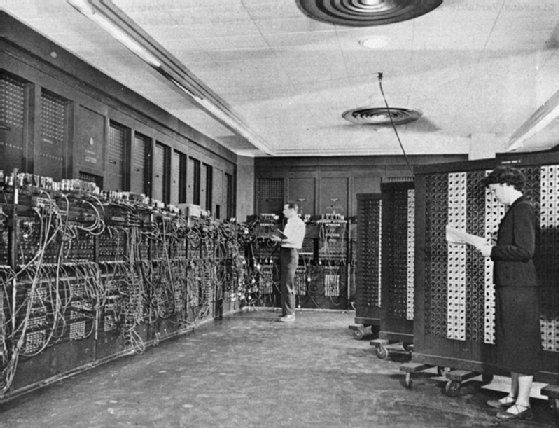ENIAC (Electronic Numerical Integrator And Computer)
What is ENIAC (Electronic Numerical Integrator And Computer)?
ENIAC (Electronic Numerical Integrator And Computer) was the world's first general-purpose electronic computer. ENIAC is also considered the world's first programmable computer, although programming the computer was a complex, manual process that could take days. Even so, ENIAC was 1,000 times faster than anything else in existence at the time, capable of performing 5,000 additions per second.
As a product of World War II, ENIAC was designed and built for the United States Army to calculate artillery firing tables. However, it was ENIAC's power and general-purpose programmability that excited the public's imagination. When it was introduced to the world in 1946, ENIAC was referred to in the media as a "giant brain."
Physicist John Mauchly and electrical engineer J. Presper Eckert designed ENIAC and participated in its creation. Along with a team of engineers, mathematicians, programmers and other experts, they built and refined the computer in the basement of the Moore School of Electrical Engineering, which is now part of the School of Engineering and Applied Science at the University of Pennsylvania. The team started to work on the computer in 1943 and formally unveiled it in 1946.

Costing nearly $500,000, ENIAC weighed 30 tons and covered an area of about 1,800 square feet. The computer was made up of 40 individual panels that were set up in a U-shaped configuration. Twenty of the panels were accumulators, which performed mathematical calculations. Each accumulator could hold a 10-digit decimal number. The entire computer contained nearly 18,000 vacuum tubes, 7,200 crystal diodes, 1,500 relays, 70,000 resistors, 10,000 capacitors, 6,000 switches and almost 5 million hand-soldered joints.
Shortly before ENIAC was officially unveiled, the computer was put to practical use by performing calculations for the hydrogen bomb project in Los Alamos, New Mexico. Scientists there turned to ENIAC to help determine whether the latest H-bomb design was feasible. The calculations required thousands of programming steps and 1 million punch cards of data, but in the end, they helped to uncover several flaws in the proposed design.
After its unveiling, ENIAC was moved to the Aberdeen Proving Ground in Aberdeen, Maryland. There it produced artillery firing tables, as originally intended, and also performed calculations related to weather prediction, atomic energy, thermal ignition, wind tunnel design, cosmic ray studies, random number studies and other disciplines. The Army retired ENIAC on Oct. 2, 1955, after running it continuously for over 70,000 hours.
The programmers who kept ENIAC working
When ENIAC was first introduced to the world, most of the credit for its construction and operation went to Mauchly, Eckert and the other men who worked on the project. However, the programmers who ensured that the computer continued to do its job were a team of six women, who, until much later, went relatively unacknowledged for their critical role in ENIAC's success.
The six women -- Kathleen Antonelli, Jean Bartik, Frances "Betty" Holberton, Marlyn Meltzer, Frances Spence and Ruth Teitelbaum -- had been hired by the U.S. Army to work on classified bullet and missile trajectory calculations. In this role, they were referred to as computers, a term used at the time to describe people who worked on complex mathematical equations. The six computers were brought onto the ENIAC team as developers and programmers, representing some of the first programmers in the history of computing.
Programming ENIAC was a complex and time-consuming process. The women had to reconfigure the computer for each job by plugging in cables and setting switches. Whenever the computer was asked to solve a different problem, the women had to develop a new program and apply it to the system. To achieve this, they had to fully learn how ENIAC worked, which they did by studying schematics and interviewing engineers.

From this foundation, the women came to intimately understand how ENIAC operated and what it took to run its programs. This enabled them to design algorithms and adjust the computer's switches to perform the necessary calculations. They also learned how to pinpoint problems within the system itself, reducing the time it took to troubleshoot and address internal issues. The six computers were inducted into the Women in Technology International Hall of Fame in 1997.
Learn more about ENIAC and its legacy. Check out our brief history of the evolution and growth of IT, and dive into the history of server hardware.